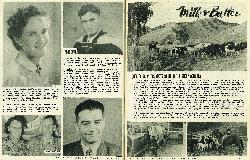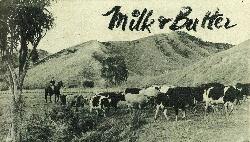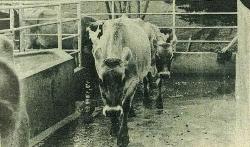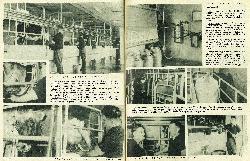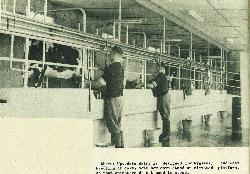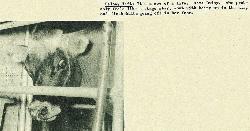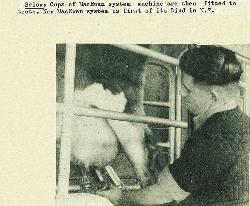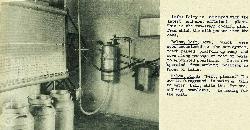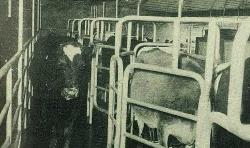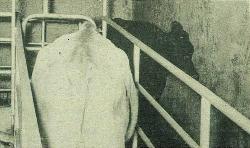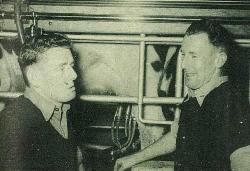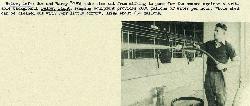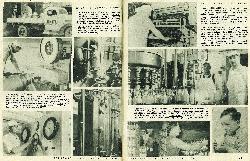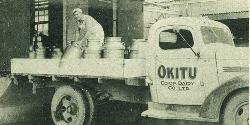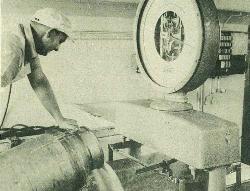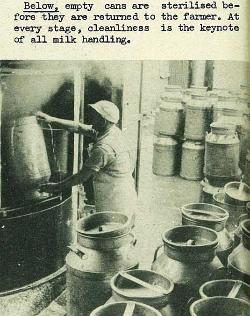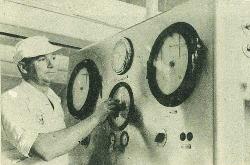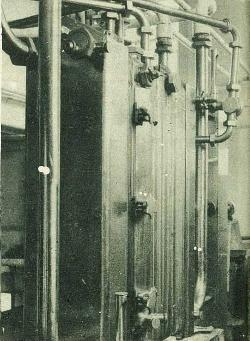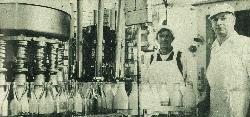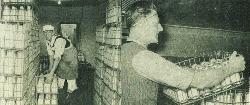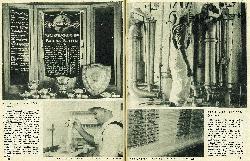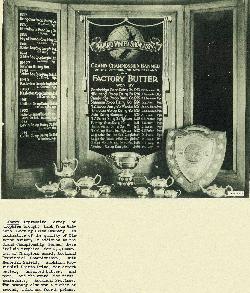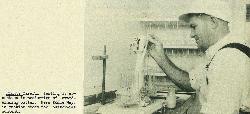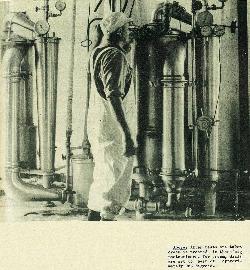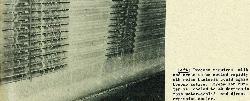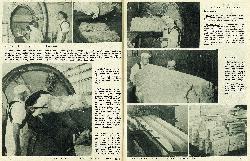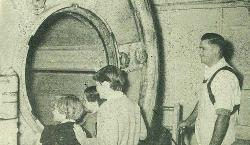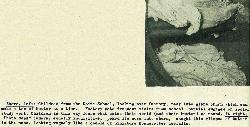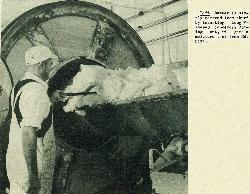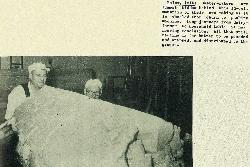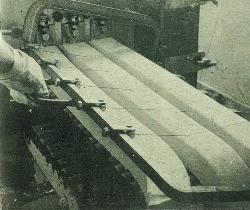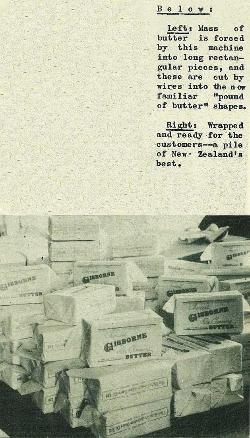11
Milk & Butter
Quality Dairy Products Shine in the Sheep Country
The story of Poverty Bay and the East Coast is very largely the story of sheep, since these parts carry more sheep to the acre than any other district in New Zealand. With the golden fleece dangling so persistently in front of our eyes, it is often difficult to remember that some of the best cattle come from hereabouts, and that our dairy industry maintains, in quality and efficiency, an enviably high standard. Recently dairying in Poverty Bay was brought into prominence by two events of note. The first was the completion, in the Matokitoko Valley close to Gisborne, on the property of Mr and Mrs R. Keiha, of a new £5000 dairy, one of the most modern in the world. The second was the fact that Gisborne butter, made in the Okitu Company's factory, won the Grand Championship Banner of New Zealand at the Waikato Winter Show, for the second year in succession.
Certainly, we thought, this was really something -- butter from the baa-lamb country successfully invading the land of Moo-Loo and carrying off the top honours, leaving all those Waikato cow-cockies standing flat-footed, with empty buckets, as it were. So we sent our camera out to do justice to the men who made possible this important provincial victory, and present on this and the next 8 pages the picture story of Milk and Butter in Gisborne. (Photographs for "Photo News" by Wilton Smith).
Pictures on this page show Barry Young, one of the two brothers who are share-milkers at the Keiha farm, bringing in the herd for milking from the pleasant pastures of Matokitoko.
The cattle are seen coming through a chemical footbath before entering the dairy.
12
Uptodate dairy is designed for hygienic and easy-handling of coirs. Note how cows stand on elevated platform, so that operators do not need to stoop.
High pressure water is available at each bail. Here cow's teats are washed before milking.
It's a cow of a life, says Daisy, who probably feels like a stage star, what with being up in the air, and flash-bulbs going off in her face.
Cups of MacEwan system machine are then fitted to teats. New MacEwan system is first of its kind in N.Z.
13
Dairy has eight bails, each about six feet long. It was built by Messrs Bingley and Evans. At present it is handling 60 cows, but it is estimated that such are the savings in time and effort that this figure could be increased to 100.
Dairy is equipped with the latest and most efficient plant. This is the two-stage cooling plant from which the milk passes into the cans.
Cows, which were soon accustomed to the new system, reach raised platform up ramp and move along passage at rear of bails to appointed positions. Gates are operated from working position in front of bails.
"Next, please!" The cow in foreground is waiting turn to enter bail, while the far one, milking completed, is making for the exit.
Joe and Barry Young take time out from milking to pose for the camera against a suitable background.
Pumping equipment provides 2000 gallons of water per hour. Whole shed can be cleaned out with very little effort, using about 250 gallons.
14
Next stage is to pump the milk through stainless steel pipes to the pasteuriser, where it is brought up to a temperature of 162 degrees, held at that for 15 seconds, and then cooled to 40 degrees. At any variation of this rigid procedure, the machine sounds an alarm.
Milk from Matokitoko goes into town supply, via Okitu Dairy Factory. At above cans are unloaded at factory by Ted Callaghan.
Shows milk being discharged into weighing machine, from which test sample will be taken.
Empty cans are sterilised before they are returned to the farmer. At every stage, cleanliness is the keynote of all milk handling.
Ernie Williamson at the control panel of a pasteuriser.
One of the pasteurising machines.
15
Okitu handles over 3000 gallons of milk per day, and in a year, just under a million gallons. In addition, 9000 gal. of cream is sold. Milk far schools is sent as far afield as Tikitiki and Ruatoria, Nuhaka and Motuhora.
Besides producing butter for the local market, the factory exports a sizeable quantity each year.
Milk bottles get thorough washing before they are filled. After rinsing and detergent baths, they get hot water treatment in this machine.
Complicated machine manned by Charlie Davis and Ernie Williamson fills bottles and caps them, ready for delivery to customers.
Milk, bottled and crated, is here prepared for distribution by Harry Hankey. Next stage involves transport to hospitals, schools and milkmen who attend to door-to-door delivery. The long chain from dairy to consumer is completed.
By Geoffrey L., enjoying his daily ration. Modern handling has kept it pure and fresh.
16
Impressive array of trophies brought back from Waikato Show by Okitu Company is indicative of the quality of Gisborne butter. In addition to the Grand Championship Banner these include trophies for N.Z. Champion of Champions award, Auckland Provincial Championship, Hutt Memorial Shield, Auckland Provincial Points Prize, for export butter, unsalted butter, and pats, and the award for first assistants, Auckland Province. The company also won a number of second, third and fourth prizes.
Dunstan's
Careful testing is essention in production of award-winning butter. Here Eddie Hays is testing cream for butter-fat content.
17
After testa are taken cream is treated in these big pasteurisers. For cream, dials are set to heat of approximately 205 degrees.
Pasteurisation kills bacteria in milk and cream and has been generally adopted as necessary in the interests of health and safety.
Process requires milk and cream to be cooled rapidly otherwise bacteria could again become active. Cream for butter is cooled to 40 degrees in this water-cooled and direct-expansion cooler.
18
Referring to success of Okitu butter at the recent show, the Dairy Company manager, Mr G. Forbes, said that much of the credit was due to the dairy-farmers of the district for their consistent production of high-grade cream. He also paid a tribute to the Department of Agriculture's local dairy instructor, Mr R. W. Maslin, whose detailed work on the farms had done much to raise standards.
Mr Forbes also referred to the assistance given by the dairy produce grader, Mr H. Barnett, and the co-operation which the factory staff had so wholeheartedly given his first assistant, Mr Hays, and himself.
Children from the Kaiti School, looking over factory, peer into giant churn which can make a ton of butter at a time. Factory gets frequent visits from school parties engaged on social study work. Children in this way learn what makes their world (and their butter) go round.
"Photo News" camera, equally inquisitive, poked its nose into churn, caught this glimpse of butter in the mass, looking vaguely like a couple of miniature Hochstetter Icefalls.
Butter is simply removed from churn by inserting long V-shaped conveyor. Coming out, it gets a moisture test from Ed. Hays.
19
Expert butter-makers on the job–Messrs Forbes (nearer camera) and Hays study moisture test.
Butter-makers are almost hidden behind this 15-cwt. mountain of their own making as it is wheeled from churn to packing machine. Long journeys from dairy-farmer to household table is now nearing conclusion. All that still remains is for butter to be pounded and wrapped, and distributed to the grocer.
Mass of butter is forced by this machine into long rectangular pieces, and these are cut by wires into the now familiar "pound of butter" shapes.
Wrapped and ready for the customers--a pile of New Zealand's best.


